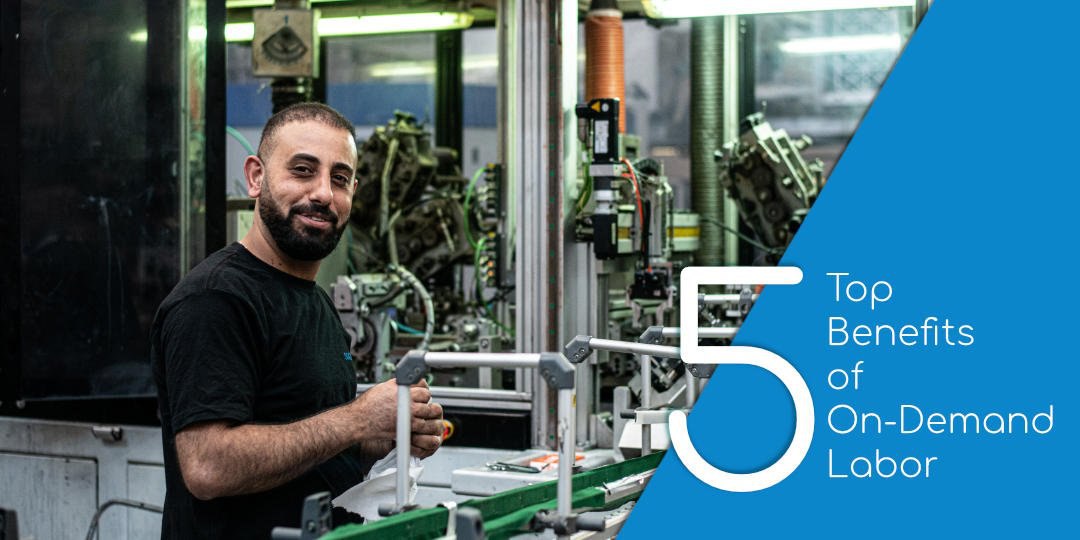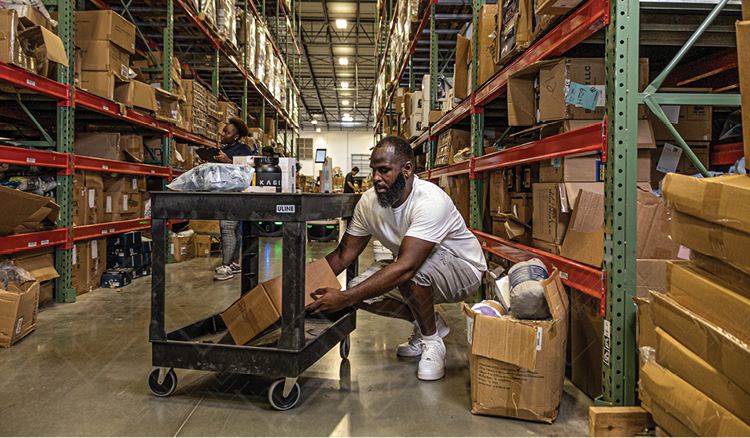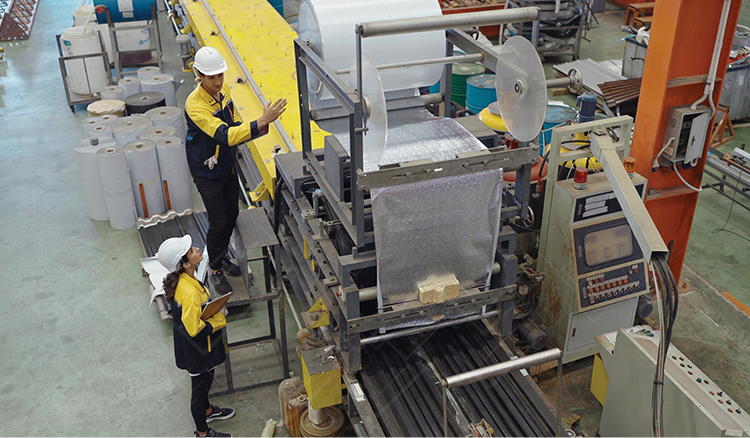Top Five Benefits of On-Demand Labor for Manufacturing and Logistics
Meeting production schedules and keeping costs down are difficult in the face of changing demands. The ever-present challenge of keeping good workers adds to the battle manufacturing and logistics companies fight every day. Labor constraints can bottleneck your operations, resulting in lost production time and potentially lost revenue as you are left to improvise a schedule and put out yet another fire for the day.
To gain an edge, some businesses have started to address their labor challenges in innovative ways. Having identified labor as a key constraint holding their productivity back, they are exploring potential solutions for improving this part of their operations specifically. One of these solutions is on-demand labor.
Using on-demand labor, businesses are able to find workers within minutes to plan their capacity in real-time. But the question remains: why are manufacturing and logistics companies choosing to use apps and platforms to connect with a flexible labor pool?
We have compiled the top five benefits of on-demand labor to make it easier to see what this new model can do for your business. Full disclosure: we at Veryable are an on-demand labor platform. We’re passionate about the benefits because we’ve seen them transform businesses in manufacturing, distribution, and supply chain operations in many U.S. states. One company we worked with used on-demand labor to improve on-time delivery performance from 70% to a consistent 95% within three months.
In this article we will explain how on-demand labor can improve your operational efficiency by providing these top five benefits:
- Access to skilled and vetted labor
- Quick response to demand swings
- No third-party commitment required
- No administrative costs
- Zero cost to scale
Access to skilled and vetted labor
Finding workers is a difficult task on its own, and it’s even harder to find trustworthy candidates. In fact, a recent report by Checkster Research found that 78% of job applicants misrepresent themselves.
With an on-demand labor platform, you gain access to skilled workers who have been vetted with a background check. Some platforms even allow businesses to leave reviews of workers, creating a track record that’s more meaningful than a traditional resume.
Vetting a candidate based only on a traditional resume typically requires a lot of legwork for you or a third party. And the unfortunate reality is that most of the candidates use their resumes as a loose and lofty representation of their actual experience.
Real reviews of workers left by other businesses on an on-demand labor platform show you more insight about the performance of individual workers than the resumes they would create to sell themselves.
Quick response to demand swings
If your demand swings wildly over the course of a year, capacity planning can be tough. Giving overtime or finding additional employees has become the norm for businesses addressing this challenge. It doesn’t have to be this way, though.
Using a labor pool of on-demand workers to respond in real-time to demand changes is more efficient.
In fact, one company using the on-demand model through the Veryable platform improved its gross profit by 77% after reducing lead times from 6 weeks to 3 days with a flexible labor capacity with day-to-day agility.
Using an on-demand labor platform, when you get your orders for the week, you can post opportunities to source a prescreened labor pool quickly. With Veryable for instance, these opportunities typically receive bids within a few minutes.
The workers you choose will only come to work when the work is needed. There’s no need to worry about scheduling them weeks ahead of time as you would for your full-time employees.
Capacity planning with on-demand labor can reduce lead times significantly by removing labor constraints.

No third-party commitment required
Another advantage of on-demand labor is that there are often no third-party commitments required. Compared to staffing solutions where commitments to using the service at a minimum rate or using a certain worker for a minimum number of hours, a labor pool of on-demand workers provides coveted flexibility for your business.
With on-demand labor platforms, your business simply posts opportunities when you need workers. When the workers complete the work, you pay the platform the workers’ rate plus a percentage markup to cover the platform’s costs. It’s that simple. There is no minimum amount of work opportunities you must provide and no minimum usage of the platform to meet. You just use the platform when you need to, and pay for what you use.
Agreeing to third-party commitments to use temp workers a certain amount of hours can be costly and wasteful when you don’t need the workers but have to give them shifts anyways. Locking into long-term contracts with third parties can also hamper your ability to quickly make cost-cutting changes. On-demand labor avoids these types of costly commitments and leaves your business free to adapt how you see fit to reach your goals.
No administrative costs
There are no additional costs required to administer the on-demand model. With a well-designed platform for finding workers, you can post opportunities and accept bids in less time than you would typically spend deciding who should get overtime pay.
A major benefit of on-demand labor is that it reduces the complexity of scheduling by eliminating the need for overtime. The switch to on-demand labor also reduces administrative costs by cutting down on the time spent managing overtime, planning around vacations, and other administrative burdens that come with full-time employees.
Zero cost to scale
Compared to traditional staffing options where there is often an upfront fee, on-demand labor is easier to scale.
With an on-demand labor platform, there is no cost to scale your labor supply to meet demand. A local labor pool already exists, and you can access it as needed with zero upfront costs. For example, in the greater Houston area, there are more than 11,000 background-checked workers on the Veryable app to respond to opportunities. A company can post their opportunity quickly, and it will be blasted to these workers at no cost.
Because businesses can pay after the work is done, on-demand labor is easier to scale than other labor solutions.
An added benefit is that the on-demand labor model is a big step toward the future of manufacturing because it enables companies to respond more quickly to customer demand. As data flow is analyzed in more intelligent ways, manufacturers will want ways to respond more quickly to demand signals from customers. A flexible supply of labor that allows businesses to ramp production up or down quickly will be a key part of core operational improvements needed to reach these goals in the manufacturing sector.
Is on-demand labor the right choice for you?
If you are facing stagnant productivity, fluctuating demand, or long lead times, you could address these issues by properly deploying on-demand labor alongside your existing labor solutions.
If your business is using traditional staffing methods exclusively to solve changing business needs, you are leaving productivity on the table. A fixed supply of labor cannot keep up to changes as well as on-demand labor.
To learn more about how these different labor models could affect your business, read our blog comparing on-demand labor to traditional staffing solutions.
Previous Posts
How Policy Constraints, Not Just Production Bottlenecks, Threaten Your Bottom Line
The Future of Manufacturing and Logistics
Create a free business profile today to explore our platform.






